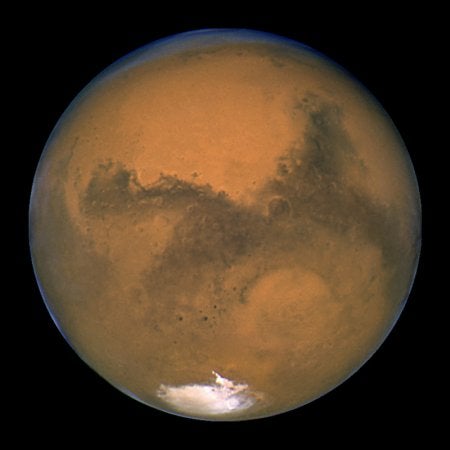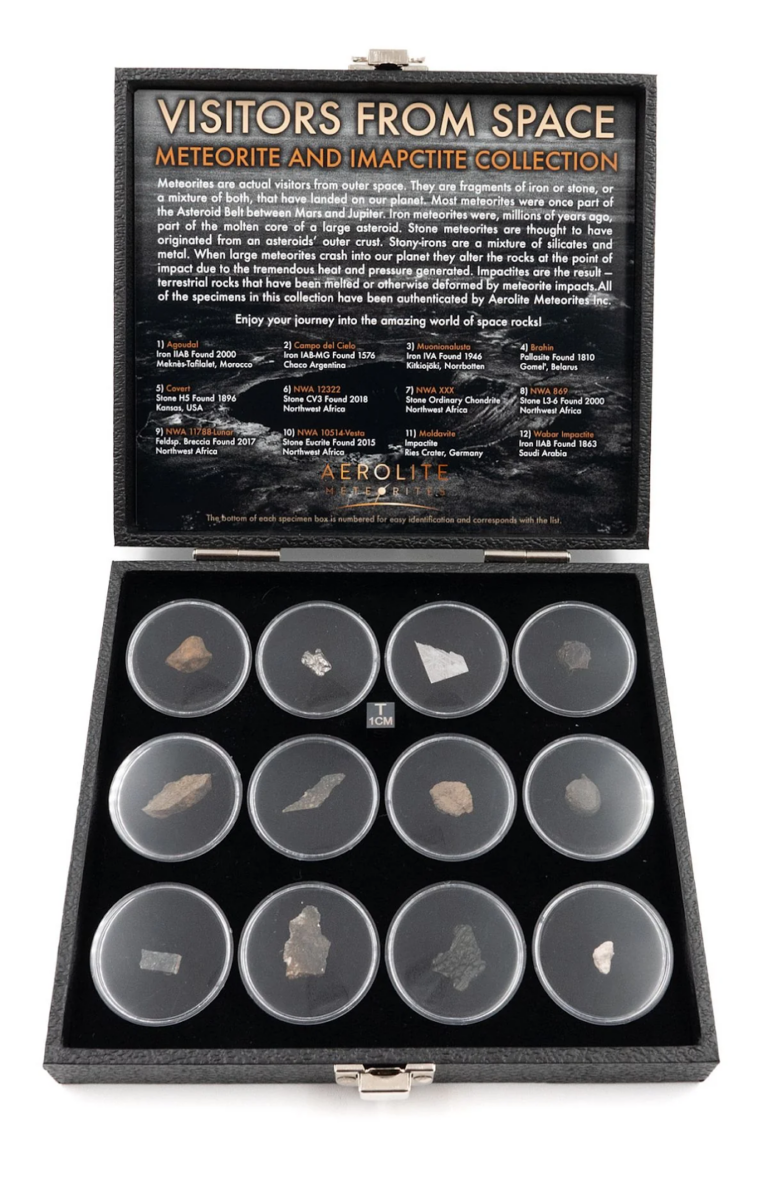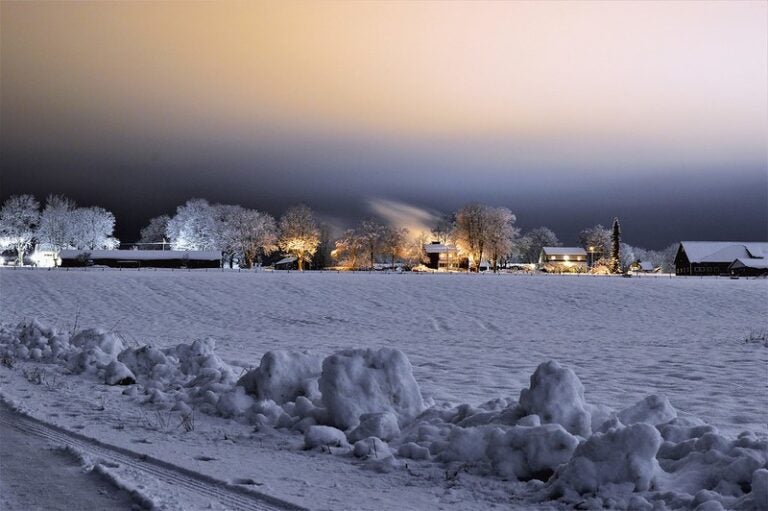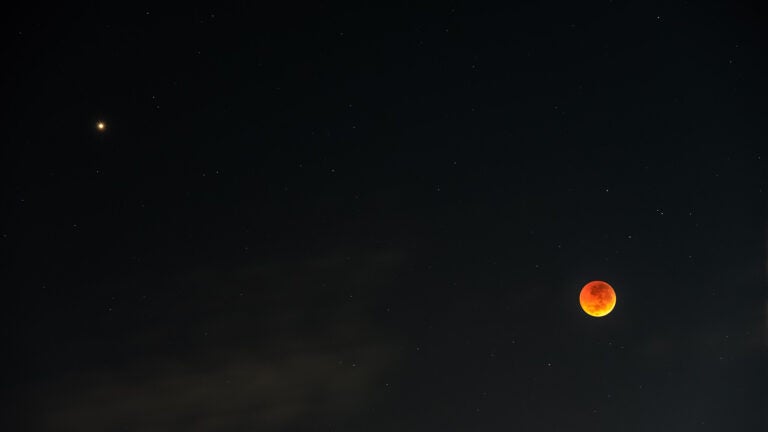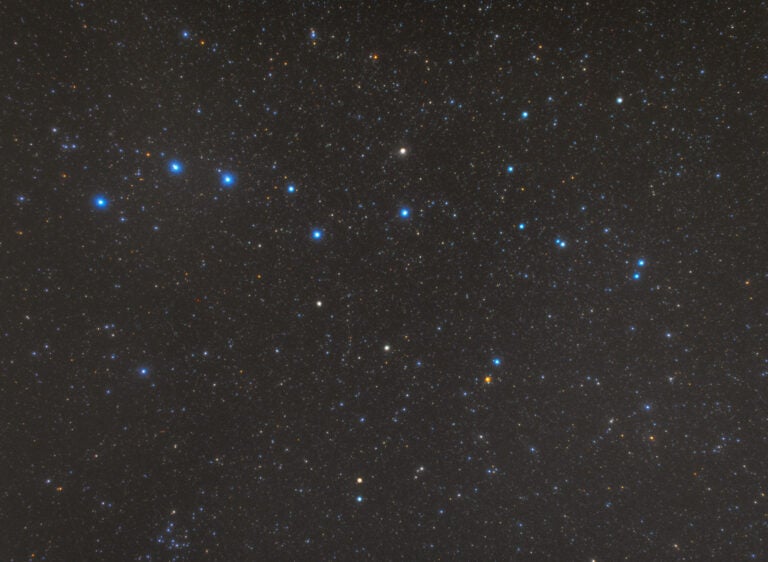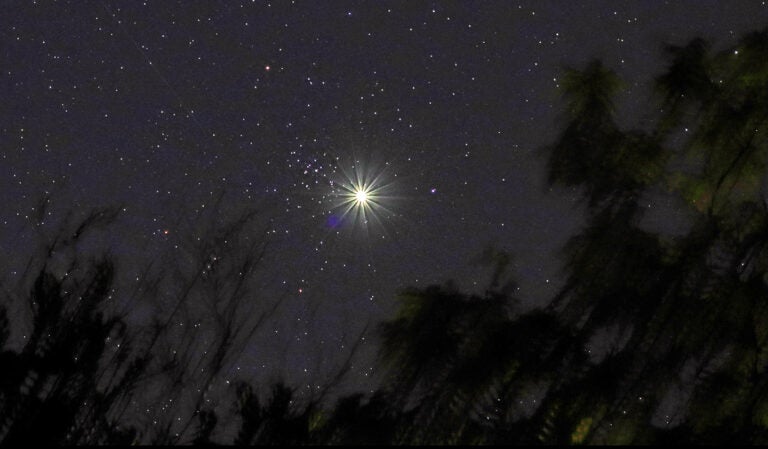Mars continues to put on a nice show these December evenings. The Red Planet appears nearly halfway to the zenith in the southern sky as twilight fades to darkness. The ruddy world shines at magnitude 0.1, as bright as any other early evening object, against the faint backdrop of Aquarius the Water-bearer.
As you gaze at Mars with your naked eye, you might assume it’s the only object of interest in the area. But target the planet through binoculars or a telescope and you’ll also see the much fainter glow of Neptune.
The magnitude 7.9 ice giant lies 16′ southwest of Mars this evening. (The magnitude 6.1 star 81 Aquarii stands 12′ north of Mars.) The actual conjunction between the two planets occurred at 9:08 a.m. EST this morning, when Mars passed 2.2′ north of Neptune, but both objects were then below the horizon from North America.
When viewed through a telescope, Mars appears 9″ across while Neptune spans 2.3″. The two planets won’t pass closer to each other under a dark sky until October 19, 2210.
Mars conjunction this morning comes as the days continue to as we approach winter solstice. Although people in the Northern Hemisphere won’t experience the shortest day of the year for another two weeks (on December 21), those at 40° north latitude will see the Sun set earlier today than at any other time this year. Tomorrow’s sunset will arrive about one second later than today’s. The date of earliest sunset depends on latitude — the farther north you live, the closer it occurs to the solstice.
New Moon also occurs tonight at 2:20 a.m. EST. At its New phase, the Moon crosses the sky with the Sun and so remains hidden in our star’s glare.
For more quick and easy observing tips, make sure to check out The sky this week for December 7 to 16.

